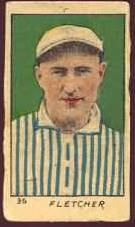It's been a little while since I've focused on "strip cards" on this blog. They were named by their manner of being issued by themselves as strips of between six and ten cards at one time. They really don't get a lot of appreciation in the hobby because they're often hard to identify, they look a lot like they were cut from a newspaper comics page and they can be easily damaged.
I have posted about the W512 set
here and
here, mentioned the W515-1 set
here and answered a question about a W555 card
here. Technically, the
MP & Co. sets of 1943 and '49 and the
1948 Blue Tints were categorized as "R" series sets but appear to have been issued as strip sets as well, so they should be brought into any discussion of strip cards.
So, let's open up the textbooks to the "W" chapter and look at a few more sets...
W514 Sam Rice
Issued between 1919 and 1921, the W514 set was one of the larger strip card sets. There were 120 cards in all, with four cards that can be found as variations due to trades. The number in the lower right of the player's picture area is pretty helpful in identifying cards from the set. One major feature of the set is that it includes seven of the "Eight Men Out," (Jackson, Cicotte, Williams, Felsch, Gandil, Weaver and Risberg) and the card of "Shoeless Joe" is his only appearance on a strip card.
W520 Stan "Kovaleski"
The W520 set appears to have been issued around 1920. It is a relatively small set, with 20 numbered cards. Three of the cards (including the Stan Coveleski card shown above) have the player's last name misspelled. Where the W514 card had the player's full name, team and position, this one simply has a last name, with a number in the lower right corner.
W522 Art Fletcher
Collectors often confuse the W522 set with the W520. They were issued around the same time, had the same 20 players and featured the exact same pictures. However, the cards were ordered differently and given different numbers (running from 31-50). The number is also moved over to the left side of the card. It is not known who made either set.
That is a little more exposure for a card type that gets little attention. That not only deepens the mystery about them, but also keeps their prices really low due to a lessened demand.




















































